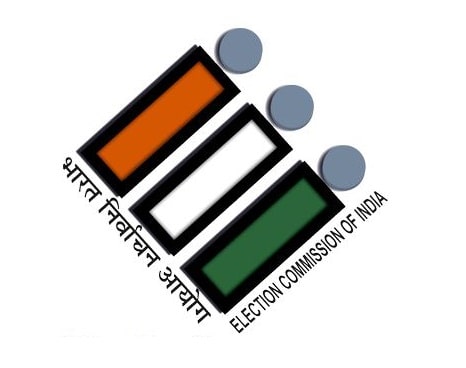Contents
>>>>>>
>>>>>>
- The Election Commission of India is a permanent and independent body established by the Constitution.
- Article 324 provides the power of superintendence, direction, and control of elections of
- Parliament
- State legislatures
- Office of President of India
- Office of vice-president of India
- So, the Election Commission is an all-India body.
- The election commission of India is not concerned with the elections to panchayats and municipalities.
- For this, the Constitution of India provides for a separate State Election Commission.
- The Election Commission of India was established on 25th Jan 1950.
- Sukumar Sen became the first Chief Election Commissioner of India, on 21 March 1950.

Composition of Election Commission of India
- The Election Commission of India shall consist of the chief election commissioner and a such number of other election commissioners, as the president may from time to time fix.
- President appoints the chief election commissioner and other election commissioners
- When any other election commissioner is so appointed, the chief election commissioner shall act as the chairman of the election commission.
- President may appoint regional commissioners after consultation with the election commission of India.
- Conditions of service and tenure of office shall be determined by the president
- Till 1989, the election commission of India functioned as a single member body
- By the 61st Constitutional Amendment Act of 1988 voting age became 18 years from 21 years.
- So, President appointed 2 more election commissioners to cope with the increased work of the election commission
- Thereafter, the Election Commission functioned as a multimember body consisting of 3 election commissioners.
- However, the two posts of election commissioners were abolished in January 1990 and the Election Commission was reverted to the earlier position.
- Again in October 1993, the president appointed two more election commissioners.
- Since then and till today, the Election Commission has been functioning as a multi-member body consisting of 3 election commissioners.
- The chief election commissioner and 2 other election commissioners have equal powers
- They receive equal salary, allowances, and other perquisites, which are similar to those of a judge of the Supreme Court.
- In case of a difference of opinion amongst the Chief election commissioner and/or two other election commissioners, the matter is decided by the Commission by the majority.
- Hold office for a term of 6 years or until they attain the age of 65 years, whichever is earlier
Independence
- The chief election commissioner is provided with the security of tenure.
- He cannot be removed from his office except in the same manner and on the same grounds as a judge of the Supreme Court
- In other words, he can be removed by the president on the basis of a resolution passed to that effect by both the Houses of Parliament with the special majority, either on the ground of proven misbehavior or incapacity.
- So, he does not hold his office till the pleasure of the president
- The service conditions of the chief election commissioner cannot be varied to his disadvantage after his appointment.
- Any other election commissioner or a regional commissioner cannot be removed from office except on the recommendation of the chief election commissioner.
Limitations in Safeguard
- The Constitution has not prescribed the qualifications of the members of the Election Commission.
- Constitution has not specified the term of the members of the Election Commission.
- The Constitution has not debarred the retiring election commissioners from any further appointment by the government.
- The budget of the Election Commission does not charge from the Consolidated Fund of India.
- Its voted through Parliament which may lead to a conflict of interests.
Powers & Functions
- Powers and Functions of the Election commission of India can be divided in 3 types
- Administrative
- Advisory
- Quasi-Judicial
- To determine the territorial areas of the electoral constituencies throughout the country on the basis of the Delimitation Commission Act of Parliament.
- Orders issued by the Delimitation Commission cannot be questioned in a court of law
- To grant recognition to political parties and allot election symbols to them.
- Grant them the status of national or state parties
- Act as a court for settling disputes related to granting of recognition to political parties and allotment of election symbols to them.
- Advise the president on matters relating to the disqualifications of the members of Parliament.
- advise the governor on matters relating to the disqualifications of the members of state legislature
- Advise the president whether elections can be held in a state under the president’s rule in order to extend the period of emergency after one year.
- Prepare and periodically revise electoral rolls and to register all eligible voters.
- Notify the dates and schedules of elections and to scrutinise nomination papers.
- Prepare a roster for publicity of the policies of the political parties on radio and TV and other media in times of elections.
- Promote awareness about the electoral process and electoral governance amongst voters, political parties, candidates, and people
- Strengthen the confidence and trust of people in the electoral system of this country
- Adopt technology for improvement in all areas of electoral process
Structure
- Election Commission is assisted by deputy election commissioners
- At the state level, the Election Commission is assisted by the chief electoral officer
- A chief electoral officer is appointed by the chief election commissioner in consultation with the state government
- At the district level, the collector acts as the district returning officer
- He appoints a returning officer for every constituency and presiding officer for every polling booth




